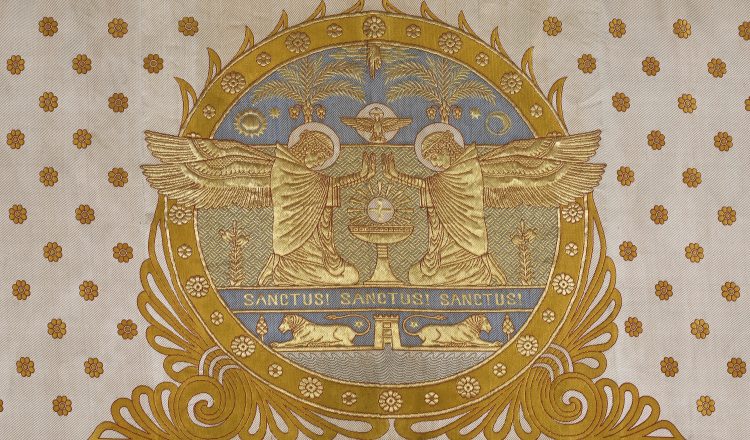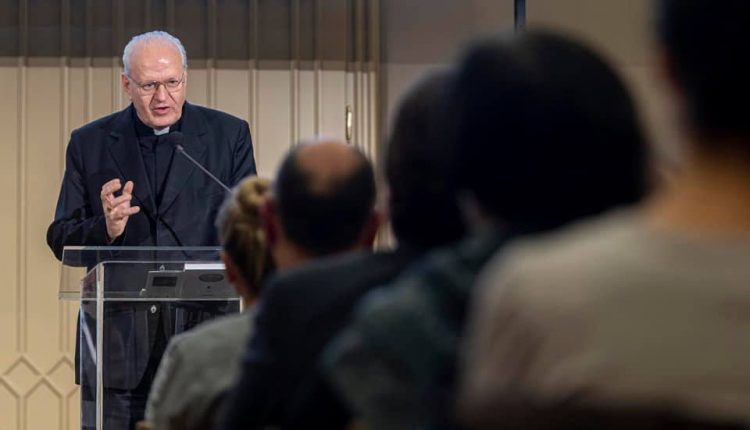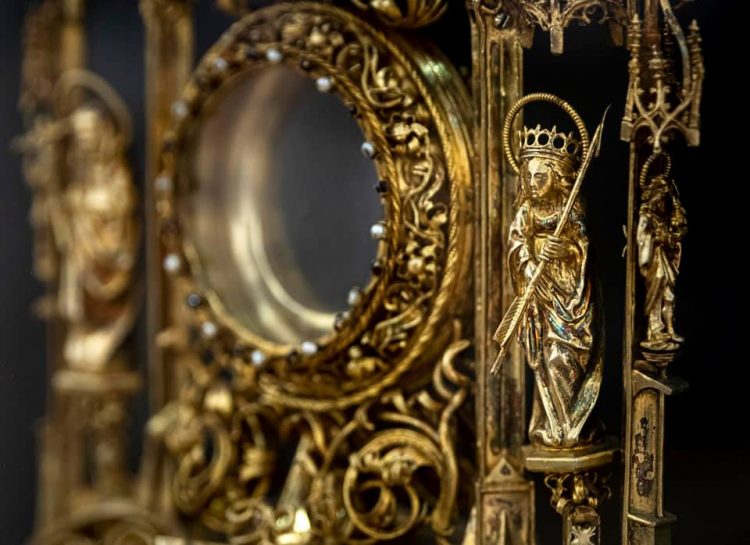
An exhibition on reverence for the Blessed Sacrament opened in the Pest Vigadó Concert Hall

Agnus Dei - Reverence for the Blessed Sacrament in Hungary is the title of the exhibition now open in the Pest Vigadó Concert Hall. The exhibit was opened by Cardinal Péter Erdő, archbishop of Esztergom-Budapest.
Péter Erdő stated that 250 objects and works of art are on display. Works of various metalsmiths, and tabernacles, chalices, monstrances, textiles and other works of visuals arts can be seen in the exhibition.
He emphasised that the exhibit presents not only items of official church devotion but a separate room dedicated to the works of folk religiosity. A series of small items prove how devotion to the Eucharist was expressed in objects of everyday life, he added. (The word Eucharist means the Holy Mass, the Last Supper made present and the Blessed Sacrament, that is to say the bread and wine that have become the Body and Blood of Jesus Christ.)

Péter Erdő noted, that though most of the objects on display are Catholic of origin, there are mementos of other denominations, for example items from a protestant lord’s supper.
The cardinal also called attention to the fact that one of his favourite paintings can be found in the exhibit, The Last Supper by Austrian painter Franz Anton Maulbertsch (1724-1796). It was originally commissioned for a church, but Maulbertsch, known for most often painting in a rather “tipsy” state, portrayed the characters in the Last Supper likewise. Thus, the painting found itself in a refectory, a dining room.
Péter Erdő pointed out how two worlds meet in the painting. We can see a more joyous atmosphere and a more exuberant company than is usual in Last Supper depictions, and the patron of the time felt it to be blasphemous. Nonetheless we can see the ecstasy in the painting, portraying how what happened at the Last Supper was far beyond the earthly dimension.

György Vashegyi, the president of the Hungarian Academy of Art put it thus in his opening words, “there are few more worthy preparatory events for the 2020 International Eucharistic Congress than this exhibit, and so it has been a joy and true honour for the Hungarian Art Academy to be able to support the creation of this exhibition”.
He added that the Hungarian Academy of Art will provide other venues for other programs in the following year, such as the Eucharistia 2020 exhibit in the Hall of Art.
Gábor Mohos, auxiliary bishop of Esztergom-Budapest, head of the preparatory commission, spoke of how this exhibit, just like the 2020 Eucharistic Congress, wants to turn the attention to “the mystery of the Blessed Sacrament present in our lives, traditions, and art, how this mystery inspired our predecessors and contemporary artists.”
“It is a foundation of our Catholic faith”, that in this simple wafer “through the Holy Mass God becomes truly present”, and “those this mystery touches, something changes in their soul”, added Gábor Mohos.

The exhibit can be seen through to January 19th, and was organised by the general secretariate of the Int. Eucharistic Congress, the Christian museum, with the support of the Hungarian Academy of Art, curated by Anna Rákossy and Ildikó Kontsek.
In addition to objects of liturgical metallurgy there are church banners, books, prayer cards, old photographs of Corpus Christi processions, film clips and Gregorian songs, folk songs, mystery plays and folk prayers can be heard.
Source and photographs: MTI










